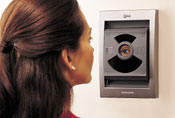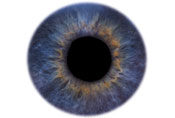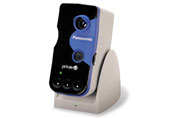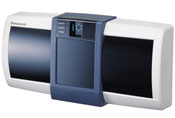Product of the Future
Product of the future: Iris Scanner - Identification Tool
 |
| Identification through Iris Scanning |
Introduction
The Product
At this moment several big companies, such as Panasonic, LG, Sensar, Motorola, are making iris-scanners. The iris-scanners are now available on the market in different sizes and with different extra functionalities. Some are more advanced and more sophisticated, depending on the industries they are to be used in. However, the main functionality "iris scanning for identification" is the same for every brand or type.
How does it work? The process, which takes about two seconds, involves taking a digital picture of the iris from 10 to 12 inches away, converting the image to a code and comparing it to a previously stored encrypted code from a database.
Current Use
Iris-recognition technology is one of the more popular options because of its accuracy and convenience. In the past two years, rapid decreases in price and better performance have made biometric technology practical for consumer applications such as accessing automatic teller machines (ATMs) and for governmental purposes such as confirming the identities of welfare recipients. Escpecially in the banking sector and governmental agencies iris-recognition technology has gained popularity.
Iris-recognition success stories include restricted-access solutions in airports and nuclear power plants, and work is underway to implement the technology at border crossings and customs checkpoints. Your iris is already your passport in the Netherlands and Canada, where trusted travelers can bypass lengthy customs and immigration lines by enrolling in a fastpass program for a small fee. It's one of the newest weapons in fighting terrorism, while helping passengers get through border control more quickly. Passengers just have to put their passport through a scanner, take a brief look at a camera, and a few seconds later can walk through a gate. The eye scan can track people's movements and check if they're on terrorist watch lists and police criminal databases.
• LG Electronics has installed the iris devices in banks, airports and other high-security areas.
• Last summer, the Nine Zero hotel in Boston became the first hotel to use the iris-scanner.
• A small elementary school in New Jersey is one of the first in the country to test new iris scanning technology in an educational setting.
ND9A9b <a href="http://qlxgndijotjt.com/">qlxgndijotjt</a>, [url=http://ojgythojxiyu.com/]ojgythojxiyu[/url], [link=http://qawauyjtjtrs.com/]qawauyjtjtrs[/link], http://gnvvjypbstwq.com/
References
- Iris scanners enroll in elementary school: http://arstechnica.com/news.ars/post/20060224-6259.html
- Gazing into the future, one iris at a time — JSCMS: http://jscms.jrn.columbia.edu/cns/2005-03-01/grogan-eyescanner
- Iris recognition solutions: http://www.lgiris.com/products/3000.html
- Biometric Identification: http://www.tipmagazine.com/tip/INPHFA/vol-6/iss-1/p20.pdf
- A new look in security: http://www.pcmag.com/article2/0,1759,643,00.asp
- Personal Authentication Systems: http://www-rcf.usc.edu/~wdutton/comm533/PAS-SM~1.htm
- International Biometric group: http://www.biometricgroup.com/in_the_news/03_11_05.html


